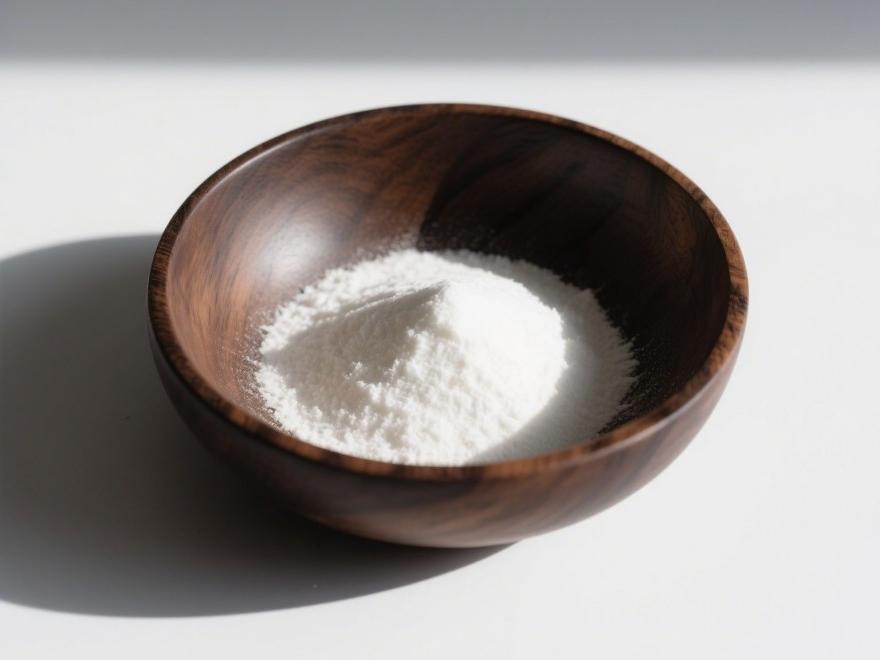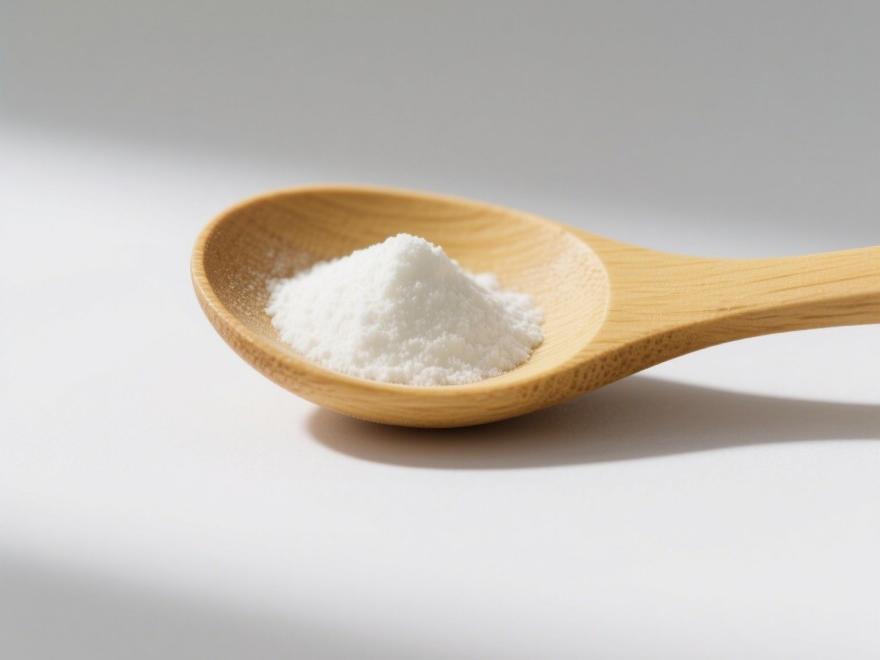What Are the Uses of Medium Chain Triglycerides(MCT) in the Food Field?
Medium-chain triglycerides (MCT) are a unique type of fat whose research began in the 1950s. Generally,MCTs are triglycerides composed of fatty acids with 6–12 (or 8–10 or 8–12) carbon atoms [1]. The fatty acids that make up MCT are called medium-chain fatty acids (MCFA), which can esterify with glycerol to form MCT without the need for a catalyst. Due to their short carbon chains, medium-chain triglycerides are widely used in the food industry as emulsifiers, exhibiting good miscibility and solubility between aqueous and oily phases. Due to their unique physiological and biochemical properties, MCFA or MCT differ from long-chain fatty acids (LCFA) or long-chain triglycerides (LCT). They have been used in human clinical therapy (e.g., gastroenteritis, obesity, diabetes) and are particularly used to provide energy for patients with lipid metabolism disorders and premature infants. In recent years, medium-chain triglycerides have also been widely used as a functional ingredient for rapid energy supplementation in sports nutrition. This article provides a brief overview of the physical and chemical properties, metabolic characteristics, and physiological functions of MCT, and finally discusses the applications of medium-chain triglycerides in the food industry.
1 Physical and chemical properties of medium-chain triglycerides
Medium-chain triglycerides are composed solely of saturated fatty acids, have a low melting point, are liquid at room temperature, and have low viscosity (2.5 × 10⁻³ to 3.1 × 10⁻² Pa·s at 20°C). Compared with soybean oil, it is completely odorless, colorless, and transparent. Compared with ordinary fats and hydrogenated fats, medium-chain triglycerides have extremely low levels of unsaturated fatty acids, excellent oxidative stability, and an iodine value not exceeding 0.5 (see Figure 1). MCT is particularly stable at high and low temperatures. After prolonged frying, ordinary vegetable oils thicken due to polymerization reactions and lose transparency; however, MCT only exhibits a slight increase in viscosity (see Figure 2), which is roughly equivalent to that of unused refined vegetable oil. Even at 0°C, MCT remains a low-viscosity, clear, and transparent liquid. Additionally, MCT has good solubility with various solvents, fats, some antioxidants, and vitamins [2]. Furthermore, medium-chain triglycerides exhibit better extensibility and lubricity than other plant oils.
MCFA also has some properties distinct from LCFA: (1) The melting point of MCFA is generally lower than that of LCFA, for example, C8:0 has a melting point of 16.7°C, C10:0 is 31.3°C, and C16:0 is 61.1°C, Therefore, MCFA remain liquid at room temperature, which facilitates digestion and absorption by animals, as the melting point of fatty acids or fats is negatively correlated with their digestibility within a certain range [3]. (2) Due to their relatively small molecular weight, M CFA are weak electrolytes and can ionize to a high degree at neutral pH, enabling them to dissolve relatively well in water. Generally, for every additional -CH₂— group in a fatty acid chain, the solubility decreases by 2.32 times. For example, at 20°C, the solubility of C8:0 is 68 mg/100 ml, while that of C16:0 is only 0.72 mg/100 ml. Fatty acids with higher polarity and water solubility generally have faster digestion, absorption, and transport in the body. (3) MCTs are volatile, while LCFA are not. Therefore, MCTs or MCTs have characteristics such as short carbon chains, smaller molecules, and higher polarity and water solubility. These properties are closely related to their digestion, absorption, transport, and metabolism processes in animal bodies.
2 Metabolic characteristics of medium-chain triglycerides [4]
Ingested MCT is broken down by lipases in the stomach and duodenum into glycerol and medium-chain fatty acids (MCFA). MCT has good water solubility and can be absorbed in the small intestine without bile emulsification. Its hydrolysis rate is six times that of long-chain triglycerides (LCT). and are absorbed in the form of glycerol and MCFA by the epithelial cells of the small intestinal mucosa, directly entering the portal vein via the small intestinal capillaries, and then rapidly transported to the liver.
MCTs have different effects on the gastrointestinal tract compared to LCTs. They have a weaker inhibitory effect on gastric emptying (duodenum-gastric feedback inhibition) but a stronger stimulating effect on cholecystokinin release compared to LCTs. Their stimulating effect on pancreatic secretion is the same as that of LCTs. MCFA undergo oxidation, metabolism, and conversion in the liver at the same rate as glucose [1]. The oxidation occurs within the mitochondria,and does not rely on carnitine as a carrier when crossing the mitochondrial membrane, resulting in faster oxidation rates than LCT. MCT is more likely to produce ketone bodies (ketone bodies) during metabolism in the body compared to LCT.

The metabolic pathways of dietary MCT in the body are threefold: (1) Oxidative decomposition: Approximately 50% of dietary MCT is oxidized, with the primary forms of MCT oxidative decomposition being -oxidation, QΩ-oxidation, QΩ-2 oxidation, and Ω-1 hydroxylation, and ultimately excreted in urine in various forms such as 3-, 6-, and 7-hydroxyoctanoic acid. Some researchers have used the detection of dicarboxylic acids in urine to evaluate MCT oxidation; however, it is currently believed that dicarboxylic acids in urine are not exclusively derived from MCT oxidation; (2) Storage in the body as fat; (3) Conversion into long-chain fatty acids, using ¹³C labeling to trace the metabolic pathways of MCT, with the formation of myristic acid (14:0) and palmitic acid (16:0) observed. Additionally, Carnielli et al. suggest that the conversion of MCT into LCT is an important pathway.
3 Physiological functions of medium-chain triglycerides
3.1 Effects of medium-chain triglycerides on lipid metabolism
Qin Huanlong et al. investigated the effects of two different carbon chain fat emulsions on post-surgical fat and liver energy metabolism in liver surgery patients. The results showed that the medium-chain triglyceride group exhibited rapid fat clearance, reduced dependence on carnitine, and protective effects on liver energy metabolism, suggesting that MCT emulsions may be a more ideal fat energy source for liver surgery patients [5]. Wu Guohao et al. investigated the effects of intravenous infusion of long-chain and medium/long-chain fat emulsions on lipoprotein metabolism. The results showed that the hydrolysis and metabolic clearance rates of MCT/LCT were significantly higher than those of LCT. During MCT/LCT infusion, the conversion rate of triglycerides (TG) to low-density lipoproteins was higher, fewer fat particles acquired cholesterol esters (CE), and the clearance of residual particles was also higher than that of LCT [6].
Meng et al. investigated the effects of fat emulsions on serum free fatty acid metabolism in newborns, finding that during total parenteral nutrition, the two types of fat emulsions had different effects on the serum free fatty acid profile. The fat emulsion containing 50% medium-chain triglycerides was metabolized more rapidly, which was beneficial for the growth and development of newborns [7].
Qin Huanlong reviewed the effects of medium- and long-chain fat emulsions on lipid metabolism in cirrhosis patients, concluding that MC T has more advantages over LC T for cirrhosis patients [8]. Liu et al. investigated the effects of medium-chain triglycerides on children's nutritional status, finding that after 4 months, the ratio of total cholesterol to high-density lipoprotein significantly decreased. Additionally, their study suggested that when children consume medium-chain triglyceride-containing fats, it is important to ensure adequate intake of energy and protein, and the diet should also include higher levels of unsaturated fats, vitamins, and minerals[9].

3.2 Effects of medium-chain triglycerides on energy metabolism
Animal experiments investigated the effects of MCT and LCT on lipid and energy metabolism, finding that compared to LCT intake, MCT intake reduced body weight (BW) and feed efficiency. Studies on rats showed that the weight gain of rats administered MCT was one-third of that of rats administered LCT. Some researchers suggest that long-term replacement of LCT with MCT may lead to weight loss without reducing energy intake. Most population studies also indicate that, compared to LCT, consuming MCT can increase energy expenditure. Some human studies suggest that during endurance exercise, 54% to 85% of medium-chain triglycerides are oxidized for energy [10–12].
3.3 Effects of medium-chain triglycerides on protein metabolism
Generally, medium-chain triglycerides are considered to have little effect on protein metabolism; however, they may have a beneficial effect on certain special populations. Yan Hong et al. investigated the effects of early enteral nutrition with medium-chain/long-chain triglycerides on protein metabolism in burn patients. The results showed that enteral nutrition formulations containing MCT/LCT effectively reduced post-burn protein breakdown, increased serum protein levels, and improved the nutritional status of burn patients [13]. Jiang Zhu-ming et al. compared the metabolic effects of two types of fat emulsions containing long-chain triglycerides (LCT) and medium-chain triglycerides (MCT). The results suggested that fat emulsions containing 50% MCT are safe for parenteral nutrition and can serve as another energy source to improve protein metabolism [14].
3.4 Effects of medium-chain triglycerides on glucose metabolism
Meng et al. compared the effects of fat emulsions containing medium-chain triglycerides (MCT/LCT) and those containing only long-chain triglycerides (LCT) on lipid clearance rates and glucose metabolism in rabbits. The results showed that medium-chain triglycerides (MCT) were cleared from the body more rapidly and had a smaller impact on the stability of lipid and blood glucose levels [15]. 3.5 Effects of medium-chain triglycerides on immune function.
Yan Hong et al. investigated the effects of medium-chain triglycerides (MCT)/long-chain triglycerides (LCT) in early enteral nutrition after burns on immune function. They found that enteral nutritional formulations containing MCT/LCT were more advantageous than those containing LCT alone in improving immune function after burns [16].

4 Applications of Medium-Chain Triglycerides in the Food Industry
4.1 Applications of Medium-Chain Triglycerides in Infant Formula
Due to low activity of lipoprotein lipase and hepatic lipase in infants, as well as low carnitine levels, fat is prone to accumulate in organs. Medium-chain triglycerides can be rapidly absorbed in the duodenum and their absorption does not depend on lipase or bile acid activity; in the liver, the transport of medium-chain triglycerides does not depend on the carnitine transport system; additionally, they can enhance the absorption of minerals and certain essential fatty acids. Therefore, medium-chain triglycerides, as a rapid energy source, play a significant role in promoting the growth and development of infants with underdeveloped digestive systems, particularly premature infants and weak infants.
4.2 Application of Medium-Chain Triglycerides in Sports Nutrition
In the liver, the transport of medium-chain triglycerides does not depend on the carnitine transport system [17], therefore it can rapidly increase energy [18], enhance athletes' endurance; simultaneously, it can reduce the rate of catabolism and conserve protein consumption; medium-chain triglycerides provide 8.3 kcal of energy per gram, which is twice that of carbohydrates. Extensive research has shown that medium-chain triglycerides can enhance athletes' endurance levels, accelerate fatigue recovery, conserve protein consumption, and increase the proportion of lean body mass. Therefore, they are suitable for nutritional supplementation and fatigue recovery in intense sports and physically demanding work.
4.3 Applications of medium-chain triglycerides in patient diets
Medium-chain triglycerides are not only highly digestible and absorbable in the human body but also clear from the bloodstream relatively quickly. Therefore, they are highly suitable as specialized foods for postoperative patients, those with infections, and patients with skin burns. Medium-chain triglycerides can also be used in foods for patients with fat malabsorption, AIDS, and cancer. Extensive basic research has been conducted in this area overseas [19,20]. Additionally, medium-chain triglycerides do not adversely affect blood glucose and insulin concentrations, making them suitable for use in foods for diabetic patients.

4.4 Application of Medium-Chain Triglycerides in Weight Loss Foods
Compared to standard fats, medium-chain triglycerides provide fewer calories per gram (8.3 kcal/9 kcal); they also enhance satiety; medium-chain triglycerides are generally used as an energy source and are not stored in fat tissue; they can reduce muscle protein breakdown; and due to their unique metabolic pathway, it can increase energy expenditure; additionally, it enhances the absorption of minerals and certain essential fatty acids. These excellent properties make medium-chain triglycerides a promising new ingredient for weight loss products and will undoubtedly find widespread application in the development of weight loss products.
4.5 Applications of Medium-Chain Triglycerides in Other Food Industries
In the food additive industry, medium-chain triglycerides can serve as solvents and carriers for edible flavorings and colorants; in baked goods processing, medium-chain triglycerides are often combined with inexpensive vegetable oils to act as anti-adhesive agents, preventing baked goods from sticking to pans or molds; Pure medium-chain triglycerides or mixtures with vegetable oils are also commonly used as lubricants and release agents for sausage molding; medium-chain triglycerides can also be used to process various fat-soluble vitamins, 색소, and antioxidants. When a small amount of medium-chain triglycerides is added, the viscosity of high-viscosity fatty substances is significantly reduced; In the food processing industry, medium-chain triglycerides are used to replace easily oxidized milk fats to produce milk-based sweet wines and cheese substitutes; when combined with water-soluble colloids, medium-chain triglycerides can also serve as a clouding agent for beverages. Additionally, medium-chain triglycerides can replace mineral oils as lubricants for food processing machinery.
참조:
[1] Bach A C, Balayan V K. Medium-chain triglycerides: an update [J]. Am J Clin Nutr, 1982, 36(4): 950-962·
[2] Luo Denglin. Medium-chain triglycerides and their applications [J]. Journal of Wuhan Institute of Technology, 2002, (2):4-7.
[3] Odle J. New insights into the utilization of medium-chain triglycerides by neonates: observations from a piglet model [J]. J Nutr, 1997, 127(6): 1061-1068.
[4] Liu Yanping, Li Ning. Metabolic Characteristics and Clinical Application of Medium-Chain Triglycerides [J]. Parenteral and Enteral Nutrition, 2001, 8(1): 54-56.
[5] Qin Huanlong, Wu Zhaohan. Effects of Different Carbon Chain Fat Emulsions on Fat and Liver Energy Metabolism in Hepatic Surgical Patients [J]. Chinese Journal of General Surgery, 2001, 16(4):240-242.
[6] Wu Guohao, Wu Zhaohan, Wu Zhaoguang. Effects of intravenous infusion of long-chain and medium/long-chain fat emulsions on lipoprotein metabolism [J]. Chinese Journal of Clinical Nutrition, 2002, 10(4):236-239.
[7] Meng, Zhang, Cai, et al. A comparative study on the effects of two types of fat emulsions on fatty acid metabolism in newborns [J]. Chinese Journal of Pediatrics, 1998, 36(3): 155-158.
[8] Qin Huanlong. Effects of medium- and long-chain fat emulsions on lipid metabolism in cirrhosis [J]. Foreign Medicine - Trauma and Basic Problems in Surgery, 1996, 17(4): 198-201.
[9]Yeou-meiChristianaLiu,ShelleyWilliams,CarlotaBasualdo Hammond, et al . A prospective study: Growth and nutritionalstatusofchildrentreatedwiththeketogenicdiet[J].JAm Diet Assoc, 2003, 103(6): 707-712.
[10]MassicotteD, Peronnet F,Brisson GR, et al. Oxidation of exogenous medium-chain free fatty acids during prolonged exercise -comparison with glucose[J]. J ApplPhysiol,1992, 73: 1334 -1339.
[11]Jeukendrup A E, Saris WHM, SchrauwenP, et al. Metabolic availabilityofmedium-chaintriglyceridescoingested with carbohydratesduringprolongedexercise[J].J ApplPhysiol,1995, 79: 756-762.
[12]Jeukendrup A E, Saris WHM, Van Diesen R, et al. Effect of endogenous carbohydrate availability on oral medium-chain triglycerideoxidationduringprolongedexercise[J].JAppl Physiol, 1996,80:949-954.
[13] Yan Hong, Peng Chaoyang, Wang Zhihong, et al. Effects of early enteral nutrition with medium-chain/long-chain triglycerides on protein metabolism in burn patients [J]. Chinese Journal of Trauma, 2002, 18(6):367-370.
[14] Jiang Zhuming, Zhang Siyuan, Wang Xiurong, et al. Effects of medium-chain triglycerides on metabolism in postoperative patients receiving parenteral nutrition [J]. Chinese Journal of Surgery, 2001, 39(9):694-697.
[15] Meng, Cai, Zhang, et al. Effects of two fat emulsions on lipid and glucose metabolism in patients with blood loss [J]. Journal of Shanghai Second Medical University, 1999, 19(2): 125-128.
[16] Yan Hong, Huang Xianhui, Xiao Kangju, et al. Effects of early administration of medium- and long-chain triglycerides on immune function in patients with burns [J]. Chinese Journal of Burns, 2003, 19(4):202-205.
[17]Bremer J.Carnitine-metabolism,and functions[J].PhysiolRev, 1983, 63:1420 -479.
[18]Decombaz J, Arnaud M J, Milan H, et al. Energy metabo- lism of medium-chain triglycerides versus carbohydrates during exercise[J].Eur J ApplPhysiolOccup Physiol, 1983, 52:9-14.
[19]Craig GB,Darnell BE,Weinsier RL,et al.Decreased fat and nitrogen losses inpatients with AIDS receiving medium-chain-triglyceride-enriched formula vs those receivinglong-chain-triglyceride-containing formula[J].JAmDietAssoc, 1997, 97(6):605-611.
[20]Linda CNebeling,Edith Lerner.Implementing aketogenicdiet based onmedium-chaintrigly cerideoilinpediatricpatients with cancer [J]. JAm Diet Assoc, 1995, 95(6): 693-697.
-
Prev
What Is Medium Chain Triglyceride Ketogenic Diet?
-
다음
Study on Medium Chain Triglycerides and Alzheimer's Disease


 영어
영어 프랑스
프랑스 스페인
스페인 러시아
러시아 한국
한국 일본
일본





